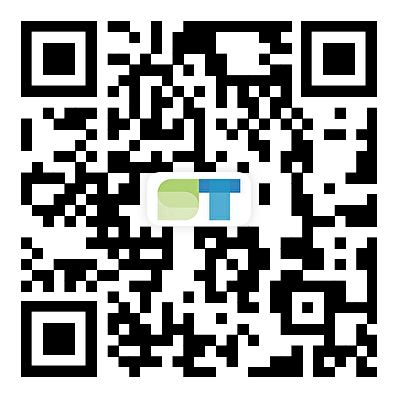Laser Displacement Sensors: Precision Measurement for Modern Applications
2024-12-13
In today’s fast-paced industrial and technological environments, the demand for accurate, non-contact measurement solutions is greater than ever. Laser displacement sensors have emerged as a revolutionary tool, offering precision measurement of distances, thickness, and surface profiles with unparalleled reliability. Whether in manufacturing, robotics, or quality control, these sensors play a critical role in ensuring high performance and efficiency.
---
What are Laser Displacement Sensors?
A laser displacement sensor is a non-contact device that uses laser technology to measure the distance between the sensor and a target surface. These sensors work by emitting a laser beam onto a surface and detecting the reflected light. By analyzing the time or angle of the reflected beam, the sensor calculates the distance with extreme accuracy.
Laser displacement sensors are ideal for measuring both moving and stationary objects and are widely used in applications where precision is paramount, even in challenging environments.
---
Key Features of Laser Displacement Sensors
1. High Accuracy:
Laser displacement sensors can achieve micron-level precision, making them ideal for industries like electronics, automotive, and aerospace.
2. Non-Contact Measurement:
The non-contact nature of these sensors prevents wear and tear, ensuring durability and reliability over time.
3. Wide Measurement Range:
These sensors can measure distances from a few microns to several meters, accommodating a variety of applications.
4. Fast Response Time:
Laser displacement sensors provide real-time data, enabling high-speed operations in dynamic environments.
5. Versatility:
They work on diverse surfaces, including reflective, transparent, and irregular objects, offering consistent results.
6. Compact Design:
Modern sensors are lightweight and compact, making them easy to integrate into complex machinery or tight spaces.
---
Applications of Laser Displacement Sensors
1. Manufacturing and Quality Control
In manufacturing, precision is critical. Laser displacement sensors are used for:
- Thickness measurement of materials like metal, plastic, or glass.
- Surface inspection for defects such as scratches or unevenness.
- Ensuring dimensional accuracy in components during assembly.
2. Robotics and Automation
Robots equipped with laser displacement sensors can:
- Maintain accurate positioning and alignment.
- Perform detailed surface scanning for automation tasks.
- Improve overall efficiency in tasks like welding or 3D printing.
3. Electronics Industry
In electronics manufacturing, where tolerances are minimal, these sensors help:
- Measure micro-components with precision.
- Test circuit boards and ensure uniformity in soldering.
4. Automotive and Aerospace
Laser displacement sensors are essential in the automotive and aerospace sectors for:
- Measuring brake disc runout.
- Inspecting engine components.
- Monitoring assembly line processes for consistency.
5. Medical Technology
In healthcare, laser displacement sensors aid in the production and inspection of medical devices, ensuring compliance with strict industry standards.
6. Construction and Civil Engineering
These sensors are used in monitoring structural integrity, measuring distances, and inspecting surfaces during construction projects.
---
How Laser Displacement Sensors Work
Laser displacement sensors use one of two primary measurement principles:
1. Triangulation:
The laser beam reflects off the target surface, and the sensor detects the angle of the reflected beam. The distance is calculated based on the angle and the sensor's geometry. This method is suitable for short to medium distances.
2. Time-of-Flight (ToF):
The sensor measures the time it takes for the laser beam to reflect back from the surface. This technique is effective for measuring long distances with high accuracy.
---
Advantages of Laser Displacement Sensors
1. Unmatched Precision:
These sensors can detect even the smallest deviations, ensuring top-notch quality and performance.
2. Non-Intrusive Operation:
Since they operate without physical contact, laser displacement sensors do not damage or alter the target surface.
3. Adaptability:
They function seamlessly on various materials, including metals, plastics, and glass, regardless of surface texture or reflectivity.
4. Ease of Integration:
With their compact design and compatibility with industrial automation systems, laser displacement sensors are easy to install and operate.
5. Cost Efficiency:
By reducing errors, improving quality control, and minimizing downtime, these sensors provide significant cost savings in the long term.
---
Choosing the Right Laser Displacement Sensor
When selecting a laser displacement sensor for your application, consider the following factors:
- Measurement Range: Ensure the sensor’s range matches your target distance.
- Accuracy Requirements: Choose a sensor that meets your precision needs.
- Surface Type: Opt for a sensor that can handle the material and texture of your target.
- Environmental Conditions: If the sensor will operate in harsh environments, select one with appropriate protection, such as dust or water resistance.
- Integration Options: Verify compatibility with your existing systems and equipment.
---
Conclusion
As industries continue to push the boundaries of precision and efficiency, laser displacement sensors are proving to be indispensable tools. Their ability to deliver accurate, reliable, and non-contact measurements makes them a cornerstone of modern technology. Whether you’re optimizing manufacturing processes, enhancing robotic systems, or ensuring product quality, a laser displacement sensor can elevate your operations to new levels.
Explore the possibilities with laser displacement sensors today and unlock the potential of precise measurement in your field.


